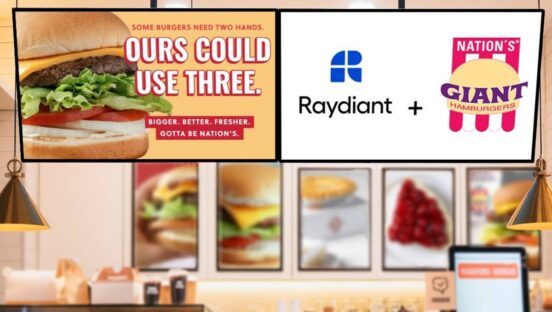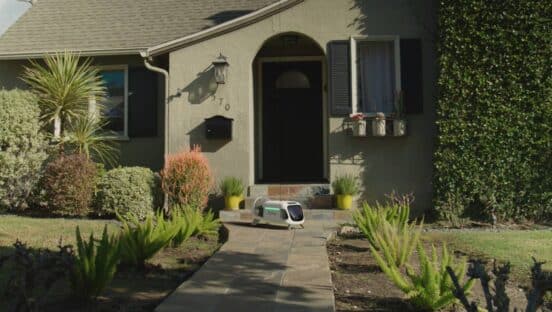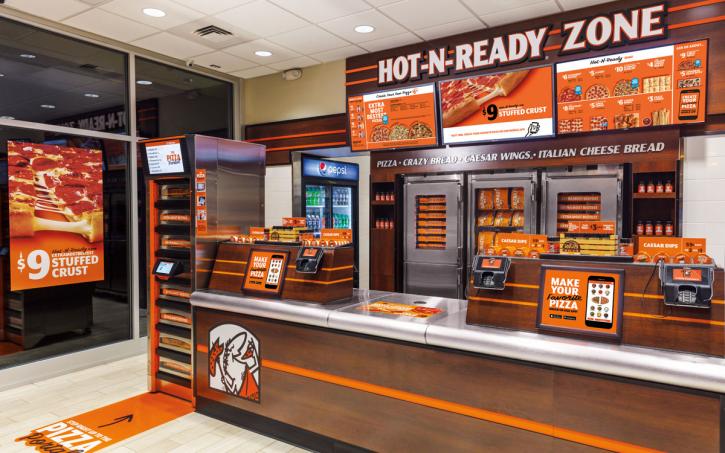


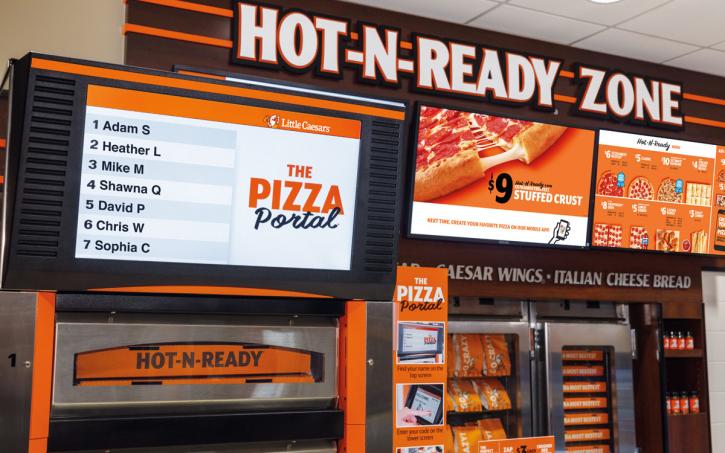

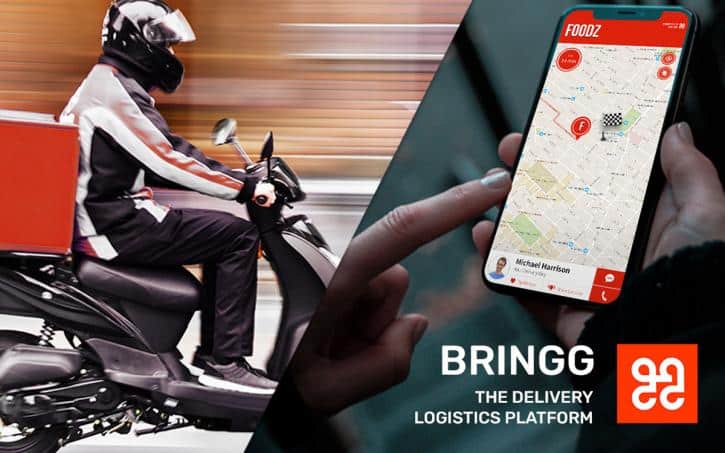
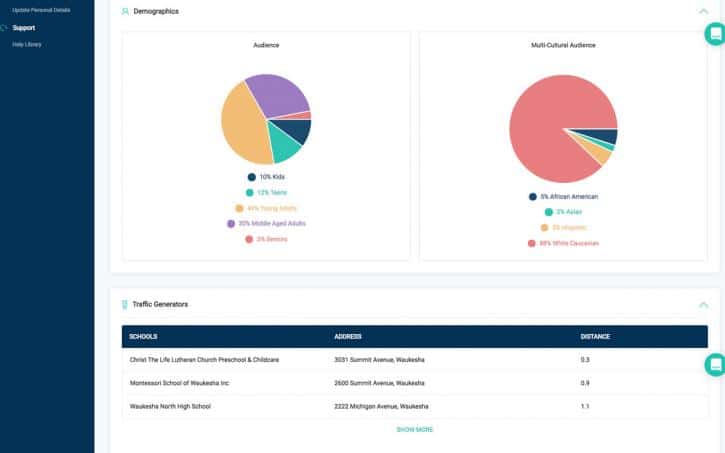
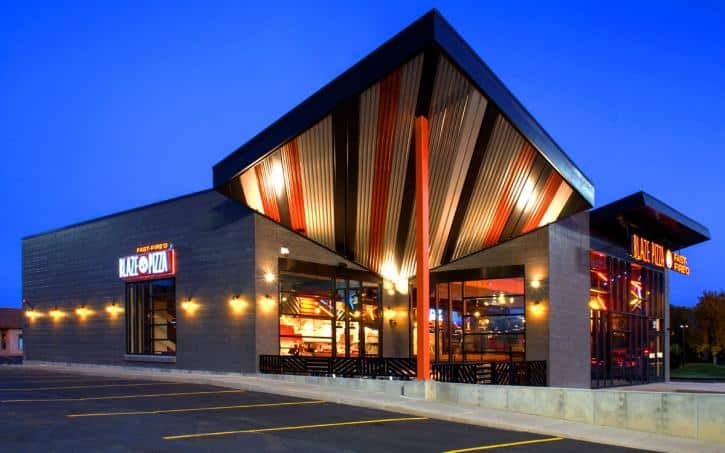
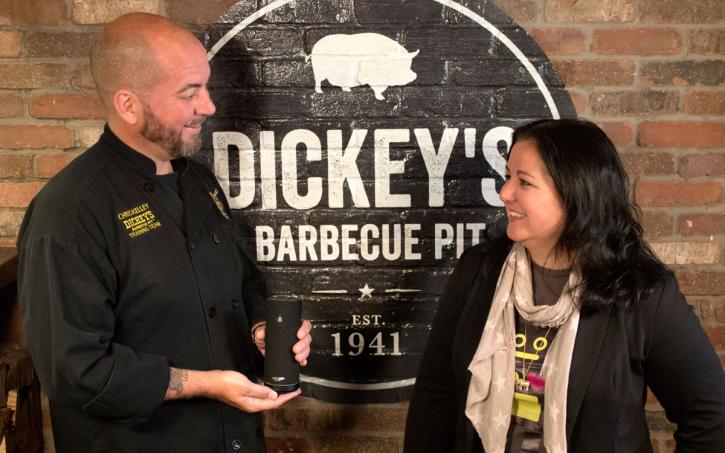
Tech of the Town
Once limited to appliances and cooking tools, restaurant technology continues to take giant leaps forward. Rather than focus solely on the latest in industrial-sized ovens and stainless steel deep fryers, operators now seek digital platforms and devices to streamline their businesses—both for customers and for their own crews.
That’s not to say that concrete tools and machines have gone the way of the dinosaur—just take a look at the Pizza Portal—but increasingly, digital is driving the speed of innovation. To that end a pioneering app one year may find itself floating into obsolescence the next.
Time and technology aren’t slowing down, but we at QSR are hitting pause for a short moment to survey the field of restaurant technology. Based on your submissions, these are our top picks for forward-thinking, status quo–disrupting tech. It’s the best of what’s out there now, but the future is nothing if not changing. Or, as Benjamin Franklin most sagely put it, “Without continual growth and progress, such words as improvement, achievement, and success have no meaning.”
CONSUMER-FACING TECH
Sure, the latest over-the-top gadgets will elicit a chorus of oohs and aahs (remember when those airport restaurant tablets were cool, not obnoxious?). But the best innovation in any consumer-driven business can be distilled into a single, overarching purpose: to drive business. These four products are undoubtedly buzz-worthy, but more importantly, they are useful tools to improve the restaurant experience for your guests—and therefore improve your business.
ezCater’s ezOrdering
The clients:
Auntie Anne’s and Villa Italian Kitchen
The conundrum: In a few years, online ordering has gone from a cottage industry to a near requirement in an increasingly competitive landscape. Despite this widespread adoption, most catering orders are still placed over the phone. This method not only ties up staff members—potentially during peak business hours—but also opens the door to error as employees may mis-hear details or later find their notes difficult to discern.
The solution: ezCater’s new product moves the ordering process for catering online. Through ezOrdering, customers can place orders at their convenience from the restaurant’s website, complete with branding elements for a smooth transition from the main site to the ordering page. The platform also makes it easy for consumers to add special directions, edit, or cancel orders.
Added oomph: Like ezCater, ezOrdering boasts an easy-to-use interface and customer service support. What’s more, the platform saves receipts online to facilitate expensing and will calculate the costs—food, tax, and delivery—for consumers on a strict budget.
Ritual’s feature
The clients:
More than 3,000 restaurants across the U.S. and Canada, including Chopt, Freshii, Just Salad, Milk Bar, and Joe & the Juice.
The conundrum: As more workers opt to work through lunch—often nibbling at their desks—restaurants have witnessed a downturn in colleagues grabbing meals together. The slump is not as detrimental for limited service since many concepts offer carryout. Still, restaurants could be capturing multiple workers from the same office were lunch a more social affair.
The solution: Canada-based Ritual was established as a way to revive the lunch traditions of yore and move people away from their desks. To that end, its Piggyback feature encourages office workers to gather for the midday meal. Piggyback connects users with teams based on their company and location, opening the door for colleagues to pick up orders together, dine as a group, or have one person make a run for the whole group when facing a big deadline. Not only do brands stand to increase their order volume and frequency, but they also have access to a much broader customer base. For deliveries, this grouping system cuts down on waste and boosts efficiency.
Added oomph: Thanks to features like Piggyback, Ritual helps restaurants boost order sizes by three to four times.
Pizza Portal
Little Caesars
The conundrum: In theory, online ordering should save customers time and help restaurants better manage orders. However, pickup can prove cumbersome for restaurant staff and customers, especially when dine-in and take-out orders are queuing in the same line. Plus, with varying arrival times from online orders, it can be challenging to keep items hot and easily accessible.
The solution: Little Caesars has resolved the dual issues of wait times and cold pizza in one fell swoop; it’s also raised the industry bar. The Pizza Portal is the first self-service, mobile pickup unit in quick service. Customers scan a QR code from their phone or enter a three-digit code, and the Pizza Portal’s automated doors dispense the order. Heat-holding technology ensures that each individual compartment keeps pies hot.
Added oomph: The Pizza Portal is exclusive to Little Caesars, giving the brand a leg up in the pizza wars. The restaurant chain expects to complete rollout by end of year. The Pizza Portal’s proprietary technology was co-developed with Apex Supply Chain Technologies, a leading provider of automated dispensing system, exclusively for Little Caesars.
Coca-Cola Freestyle 9100
Available in 2019
The conundrum: Nearly a decade ago, Coca-Cola introduced its innovative, self-serve Freestyle machine. In the intervening years, the company has built newer iterations based on data insights. One area for improvement was throughput. With a selection of nearly 200 beverages and infinite customization possibilities, the Freestyle can lead to long lines as customers either explore the menu or scroll through multiple screens to build their personal favorite drink.
The solution: The Coca-Cola Freestyle 9100, which debuted at the NRA Show in May and will roll out in restaurants next year, features Bluetooth connectivity. Through the Freestyle app, customers can connect with the dispenser once in close proximity and choose their favorite mix or try new flavor combinations. Its content management system has also been expanded, allowing Coca-Cola to upload new “digital recipes,” such as a Coca-Cola holiday mix or custom creations for specific restaurant partners.
Added oomph: The Freestyle 9100 also boasts optical sensors and a “Gameday” function where it can identify sports fans of various college and pro teams by their apparel. The dispenser will then feature team-themed screen backgrounds and special drink combinations. It can even offer promos, including free or discounted game tickets.
EMPLOYEE-FACING TECH
Chances are your customers won’t think twice about how pivotal behind-the-scenes products and tools are in creating an amazing restaurant experience. But what may be thankless from a consumer standpoints can be a godsend for employees in the back of the house. These four backstage stars are trailblazing everything from order and delivery to big-data crunching and voice-support cooking.
Bringg
The client: Panera Bread
The conundrum: In an increasingly plugged-in world, food delivery drivers often find themselves relatively disconnected while making the rounds. For many brands, the restaurants can only check a driver’s progress over a phone call or text; it’s doubly difficult for customers as they often rely on a rough time estimate from when the order was placed. At the same time, should drivers have trouble finding the proper address, they have no easy way to communicate with the restaurant or waiting customer.
The solution: Bringg aggregates all order, delivery, and monitoring functions into a single dashboard that works on both mobile and desktop. Not only does the platform dispatch orders, but it also monitors their progress in real time. Similar to ride-sharing apps, drivers using Bringg have all necessary information readily available on their mobile devices, from directions to task management to communication with customers. Bringg is also integrated with the guest-facing Panera eCommerce Ordering Experience, allowing customers to also track their orders and reach out to and rate drivers.
Added oomph: Panera is highly regarded for its digital initiatives; it even clinched the ICX Influencer of the Year award in July. For Bringg to count the café giant as a client is a huge feather in its cap—not to mention it helped Panera expand its delivery service nationwide and hire more than 10,000 drivers last year.
HubKonnect
The clients: Chick-fil-A and McDonald’s
The conundrum: In the age of customization, guests expect a more personal touch. They no longer subscribe to the one-size-fits-all philosophy with menu items, and the same can be said for how they engage with brands. For single-unit restaurants and micro-chains, marketing to a specific community can be straightforward, but as a brand grows, the process becomes increasingly complex, particularly for franchisees who operate within a wide geographic range.
The solution: HubKonnect cofounders Michael Koch and Kathy Hartman have built an artificial intelligence that not only gathers consumer insights at a local level, but it also proffers local-store marketing strategies based on that data and its own learning capabilities. The initial, data-mining portion examines local demographics, multicultural segments, traffic generators, competitors, community events, and more. The operator then sets an objective and timeline for HubKonnect, which in turn uses those parameters and the data to craft a step-by-step local-store marketing plan.
Added oomph: HubKonnect goes the extra step in big data analysis thanks to Kirby—the AI brain driving HubKonnect that also serves as “Chief Artificial Intelligence Officer.” Per his company bio, Kirby has traveled (virtually) to every local trading area and boasts a 99.9 percent success rate in his computational work.
Olo Rails
The client: More than 150 restaurant brands, including Shake Shack, Five Guys, and Blaze Pizza
The conundrum: In a few short years, the pool of third-party restaurant partners has exploded from a limited few to a dizzying plethora. In an attempt to cover all bases, many operators create their own hodgepodge strategy: subscribing to multiple services, using multiple tablets for various services, and corralling employees to monitor them. But this tactic can create more problems than it sets out to remedy. Staff members are pulled away from customers, and some online orders might be delayed or simply neglected in the shuffle.
The solution: Olo’s new Rails platform takes aim at the so-called tablet farm by serving as the ultimate connector. Olo already had 25 different POS systems integrated into its platform, and now Rails expands that network to include a host of third-party delivery services such as DoorDash, Postmates, Amazon Restaurants, EatStreet, and Caviar, as well as new ordering platforms including Alexa and GMC’s in-car ordering. With so many channels merging into a central control center, restaurants can free up their staff, improve throughput, and clear the tablet clutter.
Added oomph: Since its inception in 2005, Olo has serviced some 100 million customers, making it one of the most prolific digital partners all around. Plus, with the likes of Danny Meyer sitting on the board of directors, its footprint for services such as Rails is almost certain to grow.
Voice Enabled Technology
Dickey’s Barbecue Pit
The conundrum: Restaurants—especially the back of house—can get messy. It’s also hands-on work that can make it difficult to do much else, whether that be checking a mobile device for sales figures, confirming the next order, or double-checking a recipe. Staff are often left with the choice of dirtying a tablet or stepping away from the line to wash their hands and then check the devices.
The solution: The messy quotient can be especially high for a brand like Dickey’s Barbecue Pit, where back-of-house pit masters may need to quickly switch from slow-roasting meats to managing an operational issue. The brand worked with tech consultancy iOLAP to develop its own voice-activated platform—not unlike Amazon’s Alexa. But Dickey’s Voice Enabled Technology breaks from the consumer-facing versions in its management capabilities; it tracks metrics ranging from supply chain and shipping to specifics on how long a brisket has been in the smoker and its current temperature.
Added oomph: While Dickey’s Voice Enabled Technology has obvious back-of-house benefits, it is also used by high-level executives. And since the technology can tap into Smoke Stack—Dickey’s proprietary data-warehousing system—the applications are vast.







